In antiquity, Nubians believed that gold was a sacred material with protective powers, so jewelry makers used the metal frequently.
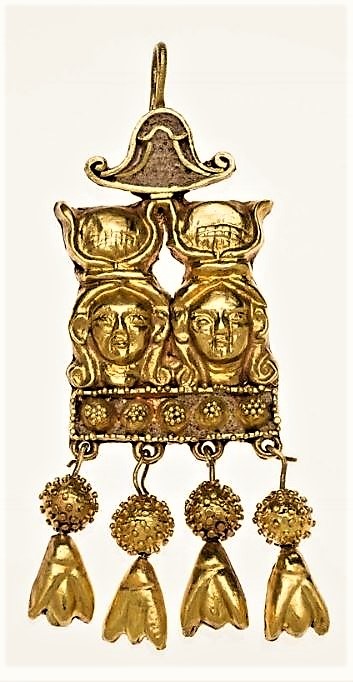
Double Hathor head earring, Nubian, Meroitic Period, 90 AD.
This is only a fraction of the ancient Nubian accessories.
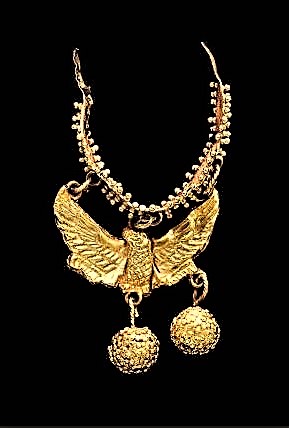
Gold earring Nubian, Meroitic Period
Thousands of years ago, Northern Sudan and Southern Egypt made up a historic area that was once called Ancient Nubia.
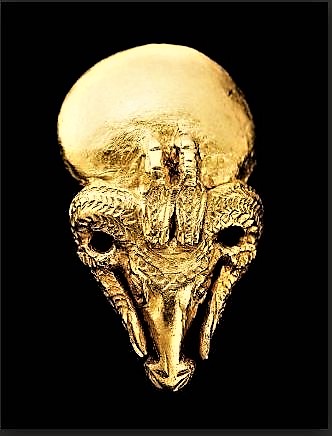
Ram’s-head earring gold Nubian, Napatan Period, 750-270 B.C. Findspot Meroe, Nubia
Its rich culture and history is contained deep inside ancient tomb chambers, housing luxurious grave goods made of silver, bronze and gold. Ancient Nubia used funerary jewelry and art in their burial practices to express their belief in eternal life, or the idea that their ancestors continue living, even after death.
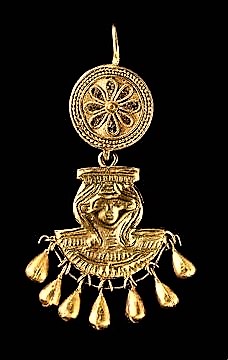
Gold Hathor earring Nubian Meroitic Period 90 B.C.–50 A.D. Findspot: Meroe, Nubia
Hathor is an Ancient Egyptian goddess who personified the principles of joy, feminine love, and motherhood. She was one of the most important and popular deities throughout the history of Ancient Egypt. Hathor was worshiped by royalty and common people alike.
The Greeks, who became rulers of Egypt for three hundred years before the Roman domination in 31 BC, equated Hathor with their own goddess of love and beauty, Aphrodite.
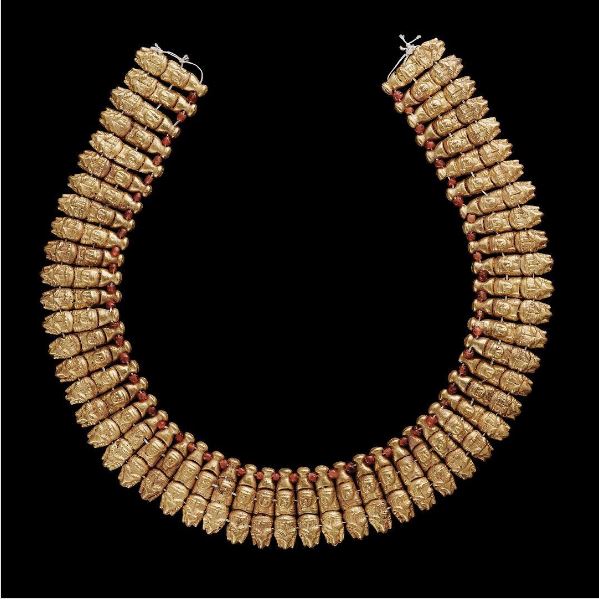
This necklace (270–50 BC) features 54 composite human head and ram’s head gold pendants with a small carnelian bead between each. The elaborate piece is among 100 glittering treasures on view in “Gold and the Gods: Jewels of Ancient Nubia.”
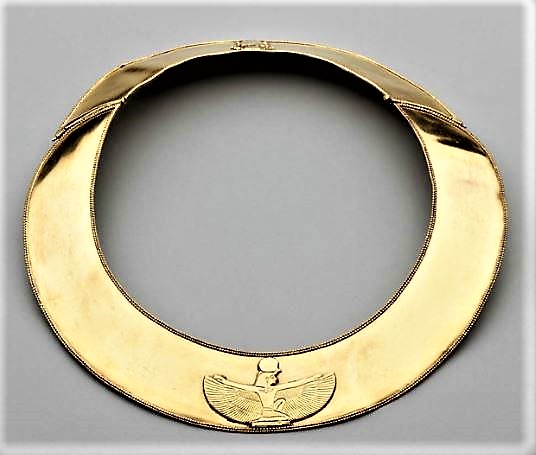
Collar of a queen of King Shebitka
Nubian
Napatan Period, reign of Shebitka
698–690 B.C.
Findspot: Sudan, Nubia, el-Kurru, Ku 72
Hinged collar of sheet metal with edges decorated inside and out with beaded wire. In the center is an applique figure of kneeling winged deity wearing a sun disc. In the center of the back is a scarab. At each side near back, hinge with pin in place.
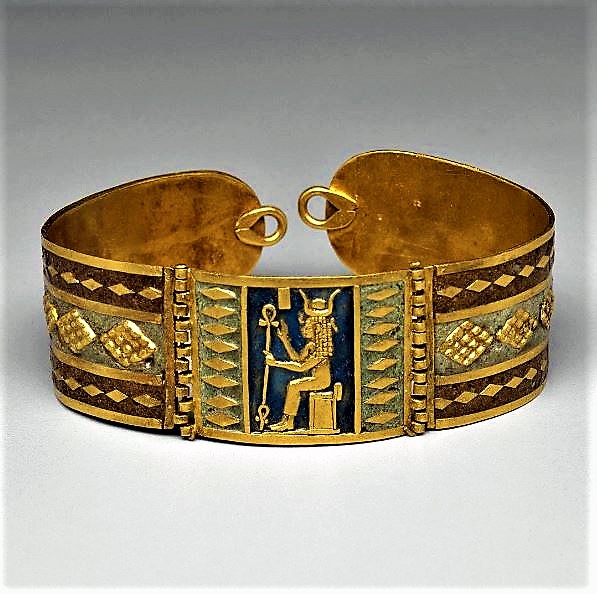
Pictured: “Bracelet with image of Hathor,” 250-100 BC
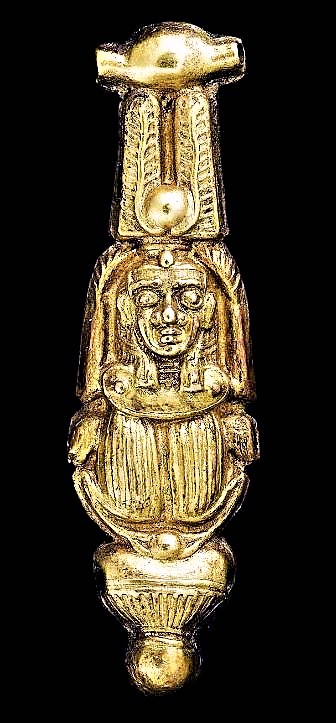
Nubian
Meroitic Period
Findspot: Sudan, Nubia
Eight large gold elements of which seven depict human heads crowned with feathers and one a squatting female figure holding a feather and crowned with vulture and double crown. Two of these elements are thought to represent Hathor and Maat.
Burials in Meroe were richly supplied with jewelry. Pendants of deities, cylindrical amulet cases, and scarabs were common during the Napatan period. By the 3rd century B.C., craftsmen had perfected the process of enameling on metal. This method replaced the setting of colored stones in channels or cloissons. Signet rings, gilded glass beads, and images of the goddess Hathor were also popular.
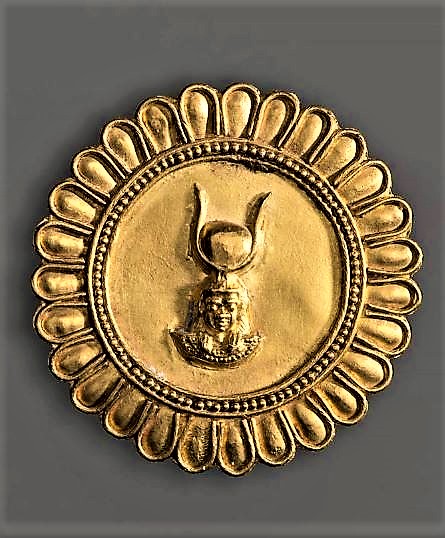
Nubian
Meroitic Period
A.D. 90–220
Gold and enamel ear stud. Around the conical center is a lotus flower fringed by a granulated double band. Stemmed blossoms make up the rim decoration. (Sudan catalogue) Findspot: Sudan, Nubia, Meroe
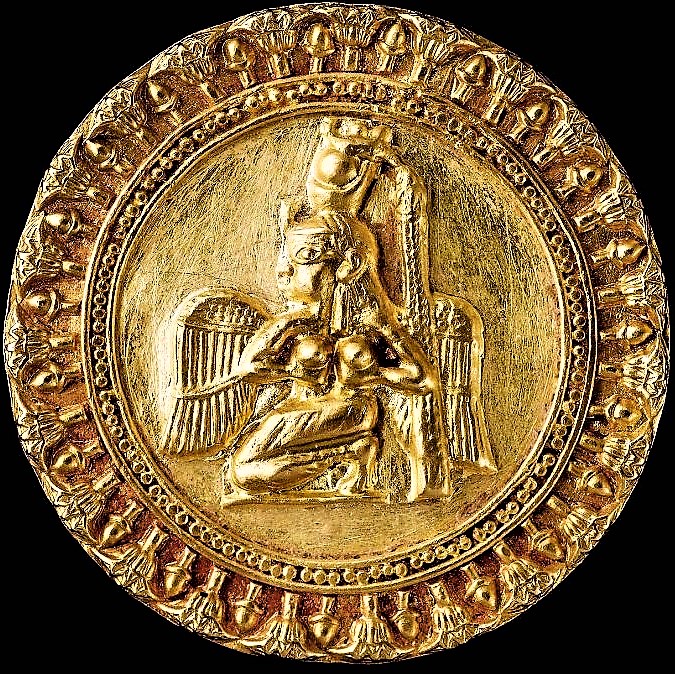
Ear stud with kneeling Hathor
Nubian
Meroitic Period
A.D. 30–170
Findspot: Sudan, Nubia, Meroe
Gold ear stud incised with Hathor. The kneeling winged goddess wears a feathered garment that leaves the torso exposed. The breasts are supported by her hands, and the double crown surmounts the vulture diadem. As on the stele of Amanikhabale (cat. 290), a bundle of plants(?) behind the goddess reaches up to the crown. The reverse bears a mirror-image representation. The decoration of the rim is identical to the stud in cat. 373. (Sudan catalogue)
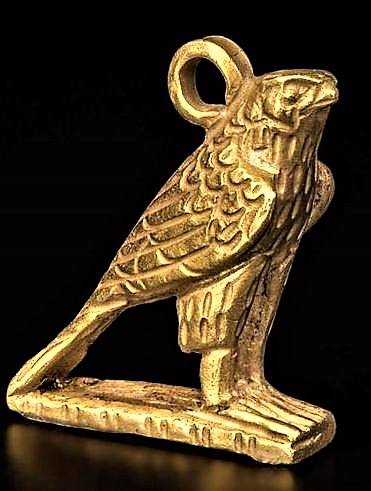
Nubian
Napatan Period, reign of Taharqa
690–664 B.C.
Findspot: Sudan, Nubia, Nuri, Pyramid 1
From Nuri, pyramid 1 (tomb of Taharqa). 1917: excavated by the Harvard University–Boston Museum of Fine Arts Expedition; assigned to the MFA in the division of finds by the government of Sudan.
(Accession Date: March 1, 1920)
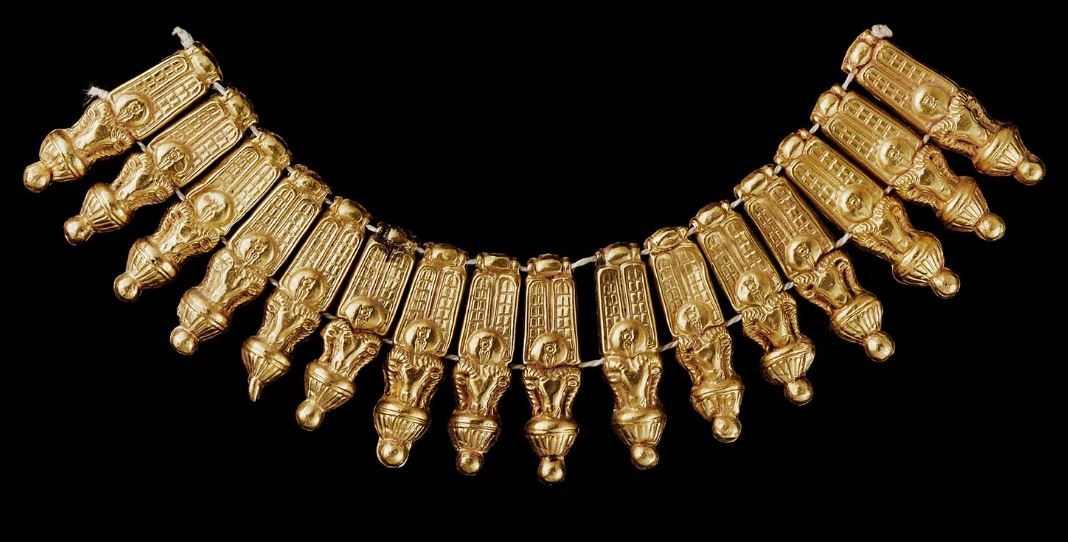
Bracelet
Nubian
Meroitic Period, reign of Amanitaraqide
A.D. 40–50
Gold. Thirteen hollow elements. Ram’s head crowned with disc, uraeus, and feathers. Strung with 24.1077a-c.
Provenance
From Meroe (Beg. N), pyramid 16. 1921: excavated by the Harvard University-Museum of Fine Arts Expedition; assigned to the MFA in the division of finds by the government of Sudan.
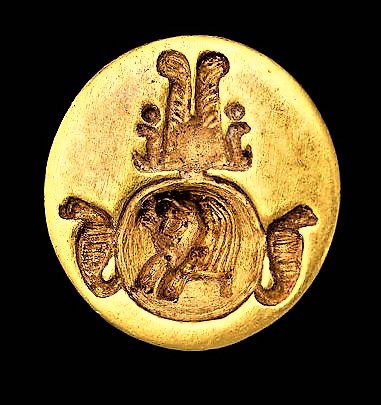
Signet ring
Nubian
Meroitic Period
50 B.C.–225 A.D.
Findspot: Nubia (Sudan), Meroe, Beg. W 134
This ring was found in the debris on the the coffin bench, along with four other signets. The circular, intaglio bezel features a falcon’ head in profile with a double-feather crown. The falcon is set in a sun disk flanked by uraei.
Provenance
From Meroe: Beg. W 134. 1922: Excavated by the Harvard University–Boston Museum of Fine Arts Expedition; assigned to the MFA in the division of finds by the government of Sudan.
(Accession date: February 1, 1922)
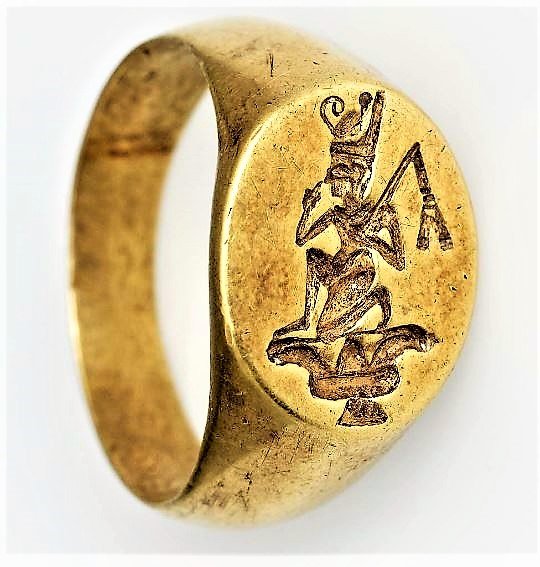
Signet ring
Nubian
Meroitic Period
90 B.C.–50 A.D.
Findspot: Nubia (Sudan), Meroe
This plundered burial contained several bronze bells and several jewelry items, including ram pendants. This ring has an oval, intaglio bezel that features a king wearing the double crown and holding a whip in left hand. He is depicted seated on an open lotus.
Provenance
From Meroe, Beg. W 18.1922: excavated by the Harvard University-Museum of Fine Arts Expedition; assigned to the MFA in the division of finds by the government of Sudan.
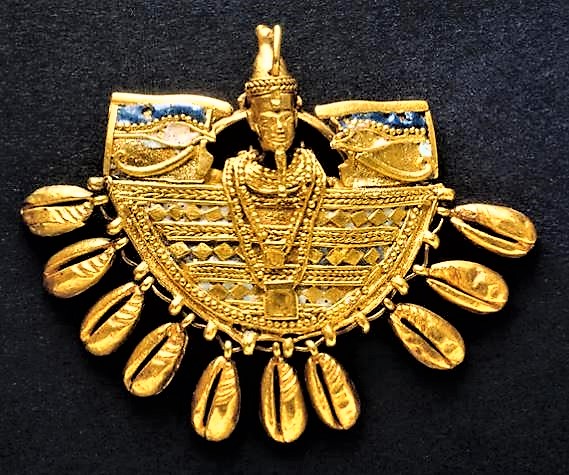
Ring with motif of the god Sebioumeker
Gold and the Gods: Jewels of Ancient Nubia, is an exhibit at the Museum of Fine Arts Boston (MFA) done in collaboration with Harvard University, to help us understand the life and culture of one of the most advanced kingdoms in Ancient Africa, through beautiful amulets, bracelets, earrings, ornaments and several other breathtaking artifacts.
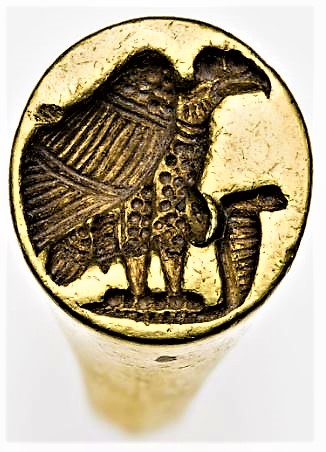
Signet ring 200–320 A.D. Gold.
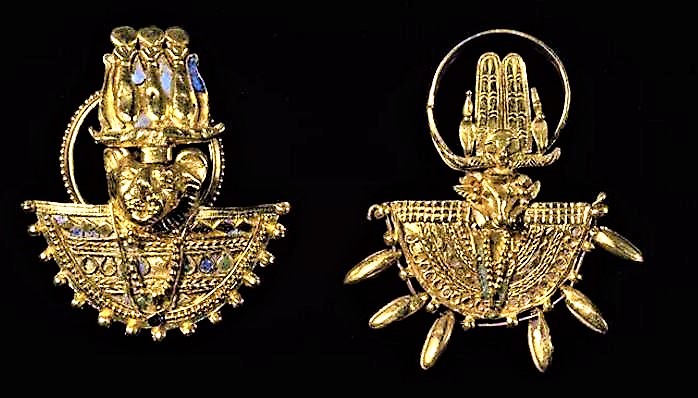
Two crest rings from the funeral treasure of Amanichakheto.
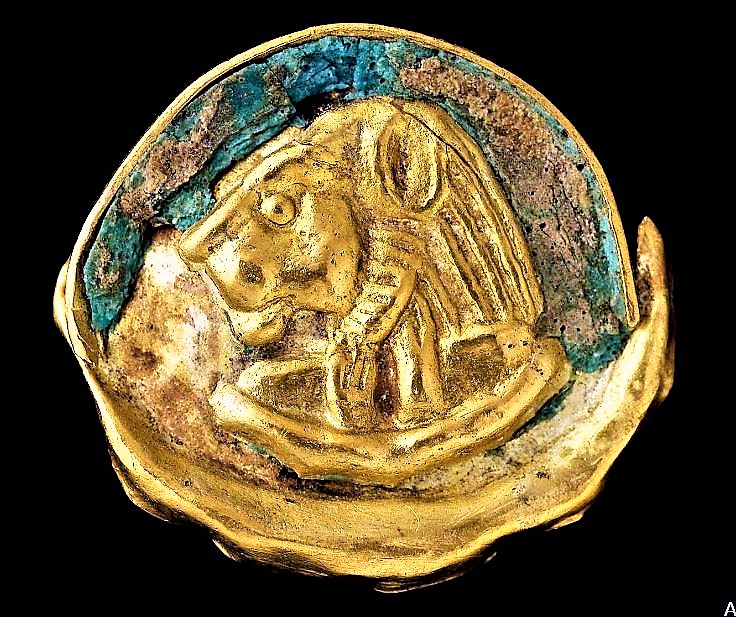
Ear ornament with lion’s head
Nubian
Meroitic Period
270 B.C.–A.D. 320
Findspot: Sudan, Nubia, Meroe
Gold. Raised lion’s head center surrounded by blue inlay; below, a gold crescent. Two gold loops on back.
Provenance
Findspot Information: From Meroe [Excav. date] Jan. 1922
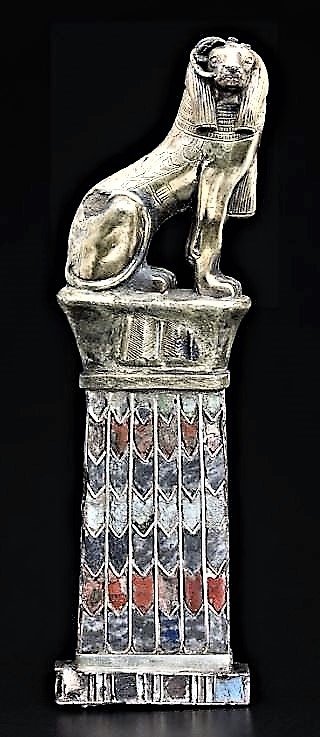
Pendant with ram-headed sphinx 743–712 B.C. Gilded silver, lapis lazuli, and glass.
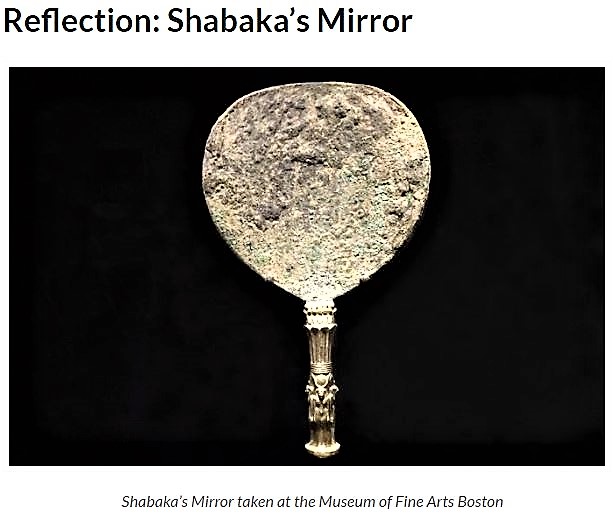
King Shabaka was a Kushite pharaoh, whose name means “he who blesses two lands”. As Egypt’s second Nubian ruler, he reigned from 712-698 BC, during the 25th Dynasty. This era was known as the Nubian Dynasty, or Kushite Empire, and at the time, mirrors were commonly made in the shape of an ankh. This represents the powers of Life and the Watery Abyss. Shabaka’s mirror on the other hand, does replicate the traditional ankh-style mirrors.
This bronze-disked, silver-handled gem also features intricate detail that tells us a lot about Ancient Egyptian and Nubian beliefs. A closer look will reveal Goddesses: Hathor, Tefnut, Mut and another feminine silhouette who could potentially be Shabaka’s sister, Amenirdis. The mirror itself is said to represent the power and great significance of women in Ancient Nubian history.
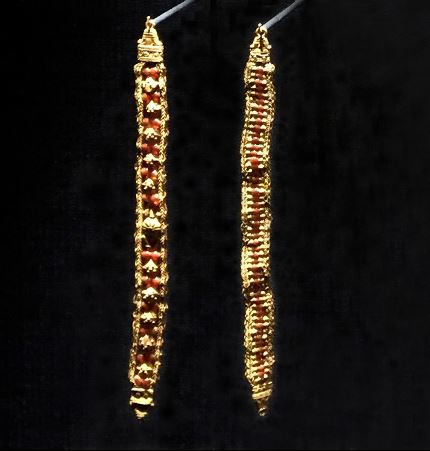
When Nubia conquered Egypt, several of its customs, like funerary art and jewelry, were also incorporated into the culture. At some point, Egypt conquered Nubia, as well. The power struggle continued over time, which blurred border lines and caused a fusion of the two cultures that’s visible in both territories.
–trending-in.com/jewels-of-ancient-nubia

The Almighty Creator bless you Sola for all your works. HE will build these beauties into our personalities in order to bless all nations.